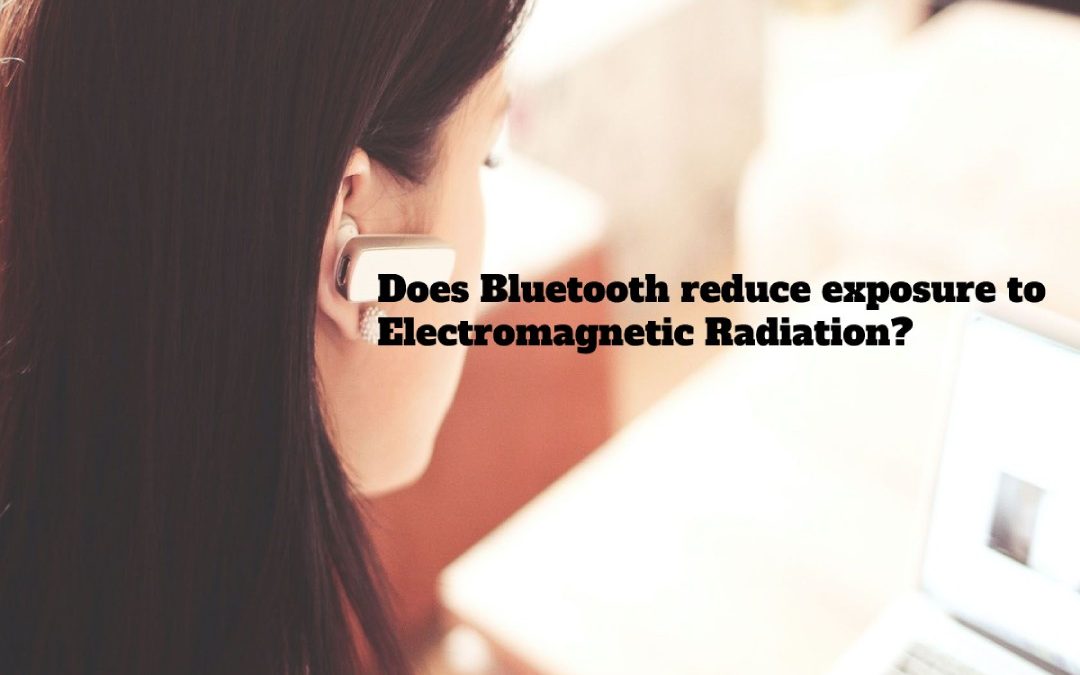Table of Contents
Introduction
when you use Bluetooth headphones, your head connects directly to your device, and you’d better not use them if you’re interested in reducing your exposure to electromagnetic radiation.
Since the beginning of the second millennium. Communication between electronic devices has relied on electromagnetic waves that spread in the atmosphere without the need for wires to connect them, called this wireless conduction technique. Which has spread despite recent talk of health concerns.
The Mystery Of Wireless Technology And Electromagnetic Radiation
in our internet time, we cannot give up smartphones that operate mainly on cellular networks and two wireless technologies: wireless communication and Bluetooth.
does switching off wireless and Bluetooth communication reduce exposure to electromagnetic radiation – reduce your exposure to electromagnetic radiation – electromagnetic waves
Is it best to avoid using wireless? And Bluetooth connectivity? Does the shutdown of these techniques significantly reduce radiation exposure and minimize health risks?
It may seem wise not to use wireless communication and Bluetooth technologies, but it is not so simple for telecommunications science and techniques.
These two technologies, in addition to the cellular communication network we use by inserting a sim card into a mobile phone, use radio frequency signals that are part of the electromagnetic spectrum, and the amount of exposure to electromagnetic radiation depends on the signal strength. The distance between the device and the body and the mode of communication used.
The Non-Ionizing Form Of Electromagnetic Radiation
keep in mind that the wireless frequency signals that wireless and Bluetooth communication are working on do not have enough energy to influence or change your DNA. As altering an individual’s DNA is terrible and leads to life-threatening diseases.
Some studies have indicated that non-ionizing radiation has measurable effects at the level of cells and tissues, but their seriousness is still highly debated.
One of these studies conducted by the national institutes of health under the federal toxicology program noted a potential carcinogenic effect of radio waves in mice. A study of a few hundred rats and mice exposed to radiofrequency radiation for a few hours. And found that 6% of male mice exposed to radiation had cancer. Interestingly, female mice never developed cancer.
While the research was not conclusive, it hinted at a strong link between cancer and exposure to radio waves.
They’re All Radio Waves!
All non-wired communication methods: cellular, wireless and Bluetooth communication networks depend on radio waves (electromagnetic waves). Yet we do not leave our mobile phones as they continue to send and receive radio waves. Specifically cell network coverage, which is the primary source of this radiation (unless you put the device in flight mode).
This does not mean that wireless communication and Bluetooth technologies do not add more radiation, but their contribution is low. Given the weak signal strength compared to cell signals.
Poor signalling is still a topic of discussion. Taking into account several other factors such as signal strength and organs remotely from the body.
Reverse Squared Law In Radio Waves
radio waves are subject to the reverse squared law with distance, i.e. radiation exposure decreases significantly as the distance between the organ and the body increases. For example, if the space is doubled, radiation exposure will be reduced by four times.
The most significant radiation exposure is when you talk directly over the phone. Your phone is very close to your skull and mind. So talking over the phone poses a greater risk of radiation than just keeping the phone in your pocket.
Similarly, when you use Bluetooth headphones and turn them on to listen to music, your head connects directly to your device. If reducing exposure to electromagnetic radiation is your primary concern, it’s best not to use a Bluetooth headset. You can make video calls instead of phone calls using wired earphones.
Specialists have recently addressed Bluetooth concerns, but what about the use of wireless communication?
It is better to use wireless communication than mobile data. This is because the power of wireless signals is about 4 watts. Far less than the energy carried by radio waves emitted by communication towers of approximately 50 watts.
However, remember that the absorption of these waves depends mainly on distance, i.e. as you approach a cellular tower or router. The more intense the radiation.
Qualitative Absorption Rate: Good Standard
the qualitative absorption rate is an important criterion that reflects the amount of body absorption of radiation associated with wireless devices. For example, the value of a wireless signal half a meter from the router is less than 0.01 watts per kilogram. While the value of the qualitative absorption rate of smartphones such as the iPhone pro 12 is 0.99 watts per kg.
Does turning off wireless and Bluetooth connectivity help effectively reduce radiation exposure? Unfortunately, the answer is not that simple.
For example, suppose you turn off these technologies and continue to use the cell network of calls and send data. In that case, you’ll still be exposed to large amounts of radiation. But using Bluetooth devices like headphones puts you at risk with this direct connection.
Finally, when choosing between mobile data usage and wireless connectivity. It’s best to choose wireless connectivity because its qualitative absorption rate is much lower. And will provide battery consumption, which is always good.

